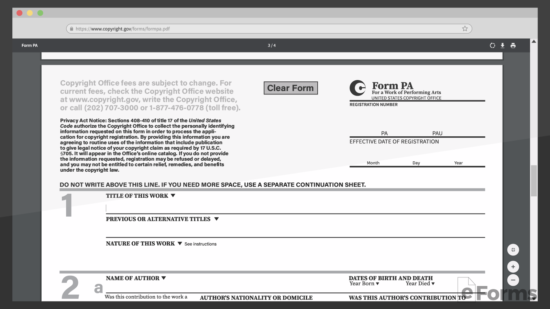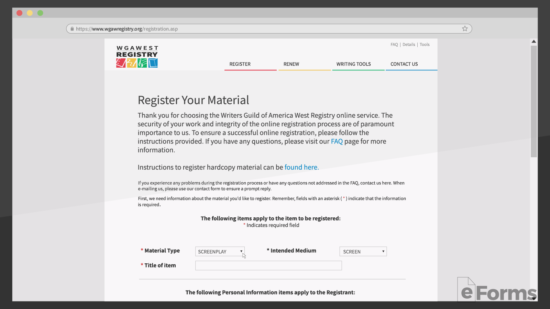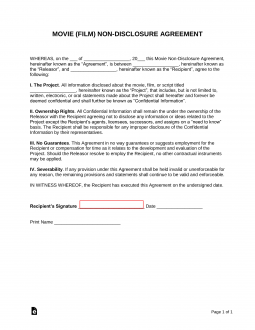Updated March 11, 2024
A movie non-disclosure agreement (NDA) is used to protect a screenwriter from having a script copied or shared with third parties.
If the movie script is shared without authorization, the sharing party will be liable for financial and legal damages.
Four (4) Ways to Protect a Script
- 1. United States Copyright Office
- 2. Writers’ Guild of America
- 3. Register an Online Copy
- 4. Mail a Copy to Yourself
1. United States Copyright Office

The best way to protect a script is to register the creative works with the United States government. Under 17 U.S. Code § 408, an individual may apply for copyright under the following:
- Complete Form PA;
- Include the Filing Fee ($); and
- Attach the script with the following number (#) of copies:
- One (1) complete copy if the work is unpublished.
- Two (2) complete copies if the work has been published.
View Current Processing Times – To get an idea of the copyright process time frame.
2. Writers’ Guild of America

In addition to any copyright, the creator of a script should have their works protected by the two (2) largest writer labor unions for movies, documentaries, television, books, plays, and any other publications.
The Writers’ Guild of America is broken into two (2) parts (recommended to register for both):
- West – Register Here with a fee of $20 (for non-members).
- 5-year protection
- Approx. 20,000 members
- East – Register Here and there will be a fee of $25 (for non-members).
- 10-year protection
- Approx. 4,000 members
It is best to register with both labor unions, although, if a creator is to register with only one (1) the West is recommended due to it being a larger and prominent group within the film industry.
3. Register an Online Copy

The two (2) options below use an online time-stamp generated by a third (3rd) party known as the “internet archive.”
1.) Upload the Work – The creator can upload their work to archive.org (“wayback machine”) and place it in a public or private account where it is recorded with a time-stamp to show the work was uploaded on a specific date.
2.) Screen Capture – If the creator has their own website, they may also upload the works there and request archive.org/web/ to crawl the page and will show a date and time the page was crawled. This will also make the URL be available to the public.
4. Mail a Copy to Yourself

Despite myths about a “poor man’s copyright”, there are no written laws in the United States that suggest mailing a document that is unsealed constitutes legal copyright. Even if it can be found the creator did mail a copy to themselves, a third (3rd) party could always accuse the creator of tampering with the package or question its authenticity. Even though this option is not recommended, it ultimately could present supplemental value if copyright is questioned.
Video
How to Write
Step 1 – Download in PDF, MS Word, or OpenDocument.
Step 2 – The date the agreement is being created can be entered first. The Releasor and the Recipient must be identified on the document as well.

Step 3 – The movie title can be supplied in “The Project” section.

Step 4 – The recipient must print their name, date the form, and sign the document to agree to its terms.



